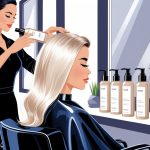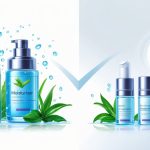Luxury Skincare Secrets Dermatologists Warn Busy Adults Overlook
Brightening and Evening Skin Tone
Lost my keys again, but honestly, the uneven patches on my jaw bug me way more. Years of messing with my skin taught me that no “busy routine” hides hyperpigmentation. Some serums are just a waste of hope.
Vitamin C and Antioxidants
My phone buzzes with reminders and I still forget hydration, but apparently, layering vitamin C every morning is supposed to help (does it? who knows). A dermatologist once told me, “Consistent vitamin C can lighten dark spots and boost collagen.” I still skip it half the time.
Don’t bother with “orange extract”—look for L-ascorbic acid, 10-20% if you can, and maybe ferulic acid or vitamin E for extra backup. Most formulas go bad anyway; airtight bottles or single-use vials work better than anything fancy. “Brightening” just means you look less dull, not like you swapped faces.
People buy vitamin C and don’t realize pH matters. Low pH (like 3.5) helps it work, but if it tingles, that doesn’t mean it’s working better. If you want to multitask, get one with stabilizers or extra antioxidants—assuming you actually use it before it expires.
Combating Hyperpigmentation and Dark Spots
Hyperpigmentation ignores everything I try. Even after telling everyone hydroquinone isn’t legal everywhere, I get texts about stronger spot correctors. It’s never a quick fix. Dr. Rachel Nazarian says things like turmeric, niacinamide, and hydroquinone (if you’re allowed) help fade spots, but you’re waiting months, not days.
People pile on treatments—retinoids, azelaic acid, tranexamic acid, vitamin C—then complain about burning and flaking. Maybe just rotate instead? Prescription stuff might be worth it, but legal stuff matters (nobody checks). I saw someone try lemon juice once. Please, don’t. Always patch test. And yes, sunscreen daily, because UV wrecks all your progress.
Incorporating Vitamin C Serums
Nobody tells you vitamin C isn’t magic, but everyone ignores the instructions anyway. After years of skin consults, I just say: slap it on after cleansing, before moisturizer, in the morning, and always follow with SPF. The best serums usually combine ascorbyl glucoside (gentler) with humectants like propanediol (here’s a list).
Storage is a pain—bottles go brown if you leave them in the sun or if your kid knocks them over. Daily use is fine unless your skin freaks out. Price doesn’t mean it works better; sometimes the drugstore stuff is more stable than the expensive bottles. If it tingles or turns orange, just toss it.
Expiration dates? Nobody pays attention, but vitamin C dies way before then. Use it up if it’s still clear. If you’re lost, pick a dermatologist-tested one and skip anything with an ingredient list that looks like a science quiz.
Adapting Your Routine to Skin Conditions and Sensitivity
Why does moisturizer run out so fast? It’s not like I’m bathing in it. Anyway, breakouts and random red patches show up all the time, and expensive packaging means nothing if the formula just makes things worse. “Dermatologist recommended” labels never say which dermatologist, either. Between hormones, hard water, and stress, every new symptom needs a different plan.
Managing Acne and Acne-Prone Skin
Dr. Peterson once told me benzoyl peroxide works better than salicylic acid for stubborn breakouts, unless your skin’s super sensitive. Everyone on Instagram swears by double cleansing, but Vogue says even top dermatologists recommend a boring oil-free foaming wash for big pores and cystic bumps. Does anyone actually wash their face for a full minute, twice a day? I doubt it. The best prescription is usually boring: fragrance-free gel cleanser, prescription retinoid when you’re not peeling, and don’t touch your face (I forget to change my pillowcase, too). Spot treatments? Half of them sting more than they help.
Sensitive Skin, Rosacea, and Eczema
Patchy cheeks drive me nuts—some serums feel like napalm during a flare. Dr. Semenuk, who’s obsessed with “minimal routines,” made me cut back after one bad glycolic acid reaction: just a simple cream cleanser, no hot water, and forget “brightening” products. Rosacea hates most anti-aging stuff—retinol feels like pouring salt in a wound. For eczema, plain petrolatum ointment beats fancy creams, but nobody brags about that. Dermatologists keep saying to skip essential oils—they’re in so many luxury formulas and just make my skin worse. Dr. Skinner told me to keep it simple and minimal, but my skincare shelf is still more complicated than my fridge.
Inflammation, Itchy Skin, and Rashes
Why does my skin always choose bedtime to freak out? Like, last week, I’m brushing my teeth and bam—itchy jaw rash, thanks to some “miracle” vitamin C serum. You know those “patch test first” warnings? I used to roll my eyes at them, but now, yeah, I’m a convert (mostly out of regret). Oat lotions, though—absolute lifesavers. Someone on a random forum said to try it, so I did, and for once, internet advice actually beat my prescription cream. Dr. Li (who probably pities my sleep schedule) keeps telling me stress is a major trigger—so apparently, if I ever sleep, my skin might chill out too. Diet and water supposedly matter just as much as products, but where’s the “snack your way to clear skin” kit? I’d buy that. Over-exfoliating? Been there, ruined that. My arms and neck start itching, and suddenly all those “glow” peels look like traps. Hydrocortisone helps, but if I use it too much, my skin gets mad all over again. It’s just this endless cycle. At this point, my “routine” is basically: use boring gentle stuff, drink tons of water, and hope for the best.
Optimizing Morning and Evening Routines for Busy Schedules
Why is it always chaos in the morning? I’m flinging cleanser around, swearing I’ll get organized tomorrow, but tomorrow never shows up. Dermatologists keep insisting routines aren’t just some marketing thing—apparently, clinical trials back them up, which is annoying. Miss a step, and my skin throws a fit, or maybe I just imagine it. Apparently, most people mess up their routine order three times a week. Feels about right.
Streamlining Your Skincare Routine
Every other person I know complains about eight-step routines. Same here. I mean, who has time to layer on serums while the coffee machine takes forever? Dermatologists keep yelling about the basics: cleanser, moisturizer, SPF. Skip one, and my face feels like sandpaper by noon. And yes, that applies to basically everyone over 25. I saw someone using a sheet mask at sunrise while feeding a cat—impressive or just weird? I’m not doing that. Turns out, a 5-minute routine actually works. Consistency beats fancy bottles, which is disappointing for my inner product hoarder. Still, I keep buying “just one more serum” like it’ll fix everything. Spoiler: it doesn’t.
Key Steps for Consistency
My muscle memory is useless. I’ll finish my nighttime routine and realize I did it backwards—serum after moisturizer, like some kind of sleep-deprived rebel. Apparently, order matters. Journals obsess over this stuff. If you mess it up, your products basically give up. Mornings, I try to stick with: gentle cleanser, maybe toner (if I remember), moisturizer, SPF. At night, swap SPF for retinoid or whatever treatment I’m testing that week. I even made a list and taped it to my mirror. Laugh, but at least I don’t forget sunscreen anymore. Dermatologists love routines. Honestly, my skin probably likes it more than I do.
Essential Products to Never Skip
No one warns you about the graveyard of half-used serums under the sink. I could open a niacinamide shop. But my dermatologist only cares about three things: gentle cleanser (twice a day), basic moisturizer, and SPF. That’s it. Science backs it up. Chemical exfoliants? Sure, but not every day. Serums are extra credit. Dr. Olansky loves minimalism—just stick with the basics and let them work. If I skip SPF, my skin punishes me faster than missing a workout. Even a super-basic routine works if you actually do it, which is harder than it sounds.



